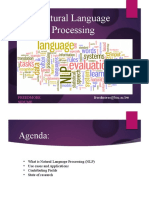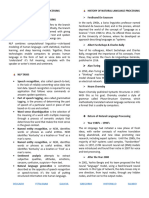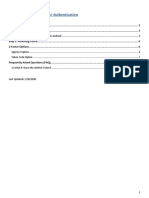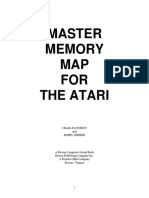0% found this document useful (0 votes)
31 views10 pagesIntroduction To NLP Natural Language Processing1
Natural Language Processing (NLP) is a field of artificial intelligence that uses linguistics, computer science, and machine learning to enable computers to understand, interpret, and generate human language. NLP techniques include sentiment analysis to determine emotions in text, text classification to sort texts by sentiment, and named entity recognition to identify entities like names and locations. These techniques involve preprocessing data, extracting features, and training classification models. NLP is also used for text summarization, machine translation, speech recognition, and developing chatbots and virtual assistants.
Uploaded by
Deep PuniwalaCopyright
© © All Rights Reserved
We take content rights seriously. If you suspect this is your content, claim it here.
Available Formats
Download as PPTX, PDF, TXT or read online on Scribd
0% found this document useful (0 votes)
31 views10 pagesIntroduction To NLP Natural Language Processing1
Natural Language Processing (NLP) is a field of artificial intelligence that uses linguistics, computer science, and machine learning to enable computers to understand, interpret, and generate human language. NLP techniques include sentiment analysis to determine emotions in text, text classification to sort texts by sentiment, and named entity recognition to identify entities like names and locations. These techniques involve preprocessing data, extracting features, and training classification models. NLP is also used for text summarization, machine translation, speech recognition, and developing chatbots and virtual assistants.
Uploaded by
Deep PuniwalaCopyright
© © All Rights Reserved
We take content rights seriously. If you suspect this is your content, claim it here.
Available Formats
Download as PPTX, PDF, TXT or read online on Scribd
/ 10






















































































